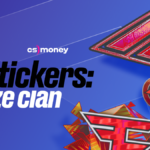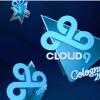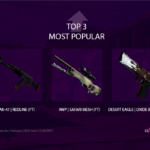A few days ago, Valve announced their intention to create a level playing field for esports teams. The company wants to achieve this by forcing Tournament Operators to use Valve’s Ranking or Open Qualifiers to determine competitors. CS.MONEY Blog breaks it all down: what is this new rating system by Valve, how it will work, and how will the new Regional Standings system in CS:GO and CS2 affect esports?
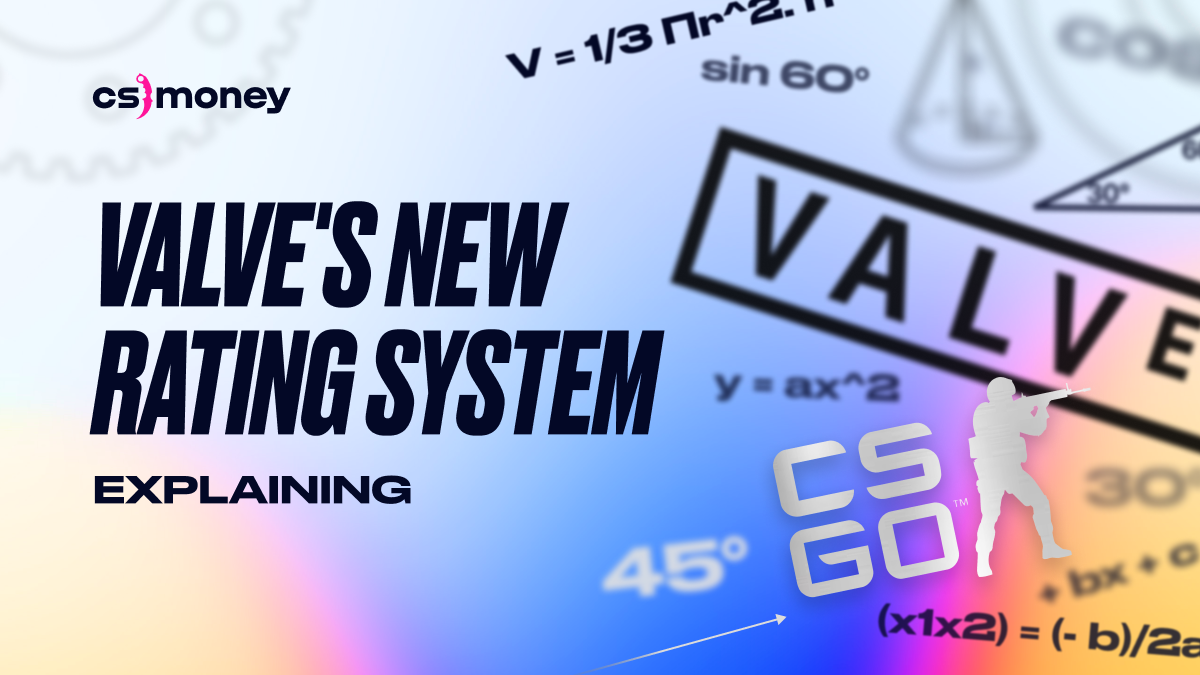
A new system for a new game. CS2 is coming out very soon, so don’t forget to update your skins to enter your new life with fresh emotions! Go to CS.MONEY Trade for cheap skins and fast deals.
What Valve Said (And Meant) About The New Team Ranking
Let’s start with the company’s statement. On their GitHub post, Valve indicated their desire to create an ecosystem in which competitions play on equal terms for everyone. In this case, according to Valve, teams’ success will depend solely on their skills. To achieve it, the company implements three key principles:
- First, Tournament Operators are prohibited from having unique business relationships with teams (read: franchise leagues have to die).
- Second, the list of tournament participants has to be formed either by Open Qualifiers or based on Valve’s own new rating.
- Third, all team rewards, including the prize pool, must be public and determined based on objective criteria.
Valve has provided enough time until the beginning of 2025 for Tournament Operators to adopt these rules. ESL, BLAST and other TOs have already announced that they are accepting the new rules from Valve. Unsurprising: rumour has it, all main TOs and Valve had a meeting during the BLAST Paris Major, where they discussed this matter long before the announcement.
How Does Valve’s New Team Ranking Work? Explained!
If you look at Valve’s Ranking, it all seems wrong. And it’s not even that it does not entirely coincide with the usual HLTV Top. In Valve’s Rankings, you can find some peculiar things like three BIG rosters at the same time or Apeks sitting ten-plus places above G2. It looks out of touch. But it’s not.
A Redditor named AleMaxSNG tried to explain how the system works. We will not retell the entire post, only focus on the key features.
- Vavle Ranking is heavily influenced by recent matches
- Teams are initially ranked by the number of prize money won
- The Ranking position is also determined by the beaten opponent’s prize money…
- … and by the number of teams beaten by this opponent.
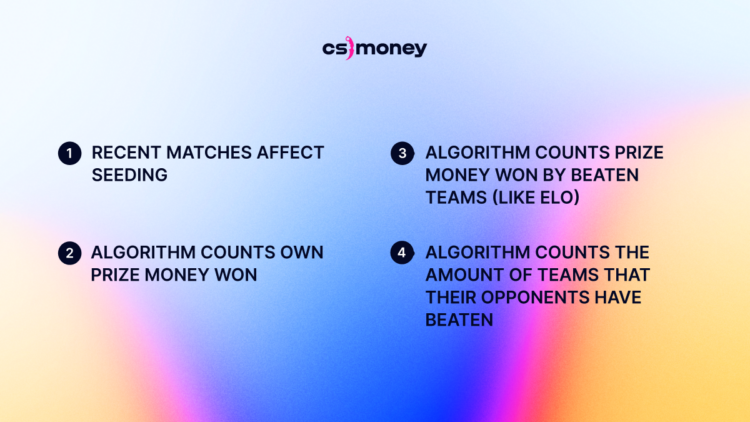
Another important thing: Valve Ranking uses the ELO system as a base. This means that the result of each match affects the position of the team in the rating table. Putting all the factors together, it becomes clear why there is such a difference between Valve’s Top and HLTV’s Top. Valve Ranking allows Tier-2 teams to farm points in matches against teams of their level. And because of this, teams like Apeks, GamerLegion or 9INE are ranked higher than NAVI, G2 or Liquid.
How Can Valve’s CS Teams Ranking Affect Esports?
Obviously, now Valve’s new Ranking prefers and praises the most active teams. Those who often play a lot of online tournaments go to smaller LAN competitions to show themselves well there could easily score points and climb up the Rankings. For Tier-2 teams, this is a great opportunity to try their hand at top teams. After all, the rating directly shows that such teams have stayed in their division and are ready to play against stronger rivals.
But there’s a downside. Avid Dota 2 fans will remember how a few years ago its esports was filled with numerous little-needed matches. As a result, this led to a decrease in the overall level of play and simple fatigue among teams. It is impossible to consistently show a top level if you do 300 official matches per year.
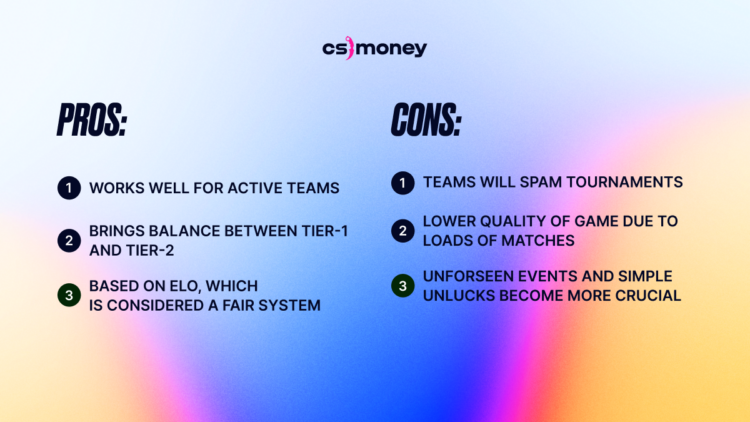
Surely, there’s also an alternative. Tournament Operators can run Open Qualifiers instead of using Valve’s Rankings. But history shows that most of these Quals are conducted in Best-of-1s. In addition, they often make only one or two Qualifier Tournaments. As a result, one team may simply slip because, for example, one of the players had a power outage—and they had to forfeit.
How exactly Valve intends to solve all these problems is still unclear. But the developers have already stated that they are “going to continue experimenting” with their Ranking formula. In their description of the Rankings, Valve notes that their current model tends to underestimate winnings at the low end and overestimate at the high end. All this gives hope that the rating will be finalized and in the future, it will really help create a level playing field for all esports clubs.






